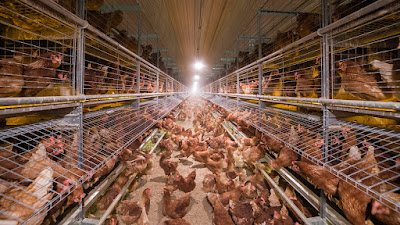Effect of Light on Egg laying in Hen
Do you know the effects of light on laying hens? Have you noticed that summer and spring are the prime egg laying seasons of your hens?
Your hens lay comparatively more eggs during those seasons than winter or rainy seasons. If your hens decrease their egg production, the fall is probably in the air.
A certain amount of sunlight or daylight is required by the hens in order to maintain maximum egg laying. Even the egg laying patterns of your hens can be changed due to one hour or two less of sunlight.
 |
| How Light affects Laying Hens |
So, for producing fresh eggs throughout the year, you have to install artificial lighting facilities inside your chicken coop. In a word, sunlight has a great impact on your laying hens.
Effects of Light on Laying Hens
The effects of light on laying hens are described below. Follow the rules and ensure sufficient amount of sunlight and artificial light for your laying hens.
Sunlight
For getting continues and maximum egg production from your hens, they need about 16 hours of light and 8 hours of darkness period while roosting. Egg production fall down if lighting period get reduced.
When daylight is not available for about 12 hours a day, you have to ensure essential lighting period by adding artificial lighting facilities.
Some people think that, during winter season egg laying get reduced. But it’s not right. Even hens in warm climates produce fewer eggs once the daylight hours decline. So, sunlight plays an important role for laying hens.
Artificial Light
In case of artificial lighting, you can keep a 40 watt bulb for each 100 square feet housing area. Doing this will keep your hens laying throughout the year.
Incandescent bulbs is much effective than florescent lights. Because the wavelengths of incandescent bulbs has similarity with natural sunlight.
You can put the bulbs on a timer so that all the bulbs get switched on in dark hours. Use the light in the dark hours of the morning instead of during night time.
Set the timer in such a way so that the hens have only 8 hours of darkness for roosting. For example, if the sun sets at 6 p.m. then set the timer to turn on the lights at 2 a.m.
In a word, you have to ensure total 16 hours of lighting period and 8 hours of darkness for better egg production throughout the year.
Pineal Gland
The pineal gland of hens is a part of their endocrine system. It’s situated behind the eyes, above her midbrain. This pineal gland of hens produces melatonin that helps to regulate sleep and other body functions of them.
When the natural lighting period of day lengthen, then the pineal gland of hens responds by sending a hormone through her body to ovary to start producing eggs.
And when the days shorten then the pineal gland stops sending this hormone. As this pineal gland is light sensitive, so you can fool it by increasing the amount of light available to the hens while the fall and winter season.
Naturally, hens lay more eggs during summer and spring season and egg production decreases when autumn arrives and in winter season.
Sometimes young hens can produce eggs on a regular basis, even throughout the winter season. A hen can produce numerous eggs in her lifetime.
The amount of egg production per year varies by breed and individual chickens. And sunlight is very important for each breed of chickens. The presence of sunlight directly influence their egg production.
So, along with sunlight, ensure at least 16 hours of lighting period by using artificial lighting. Thus your hens will produce their maximum.
